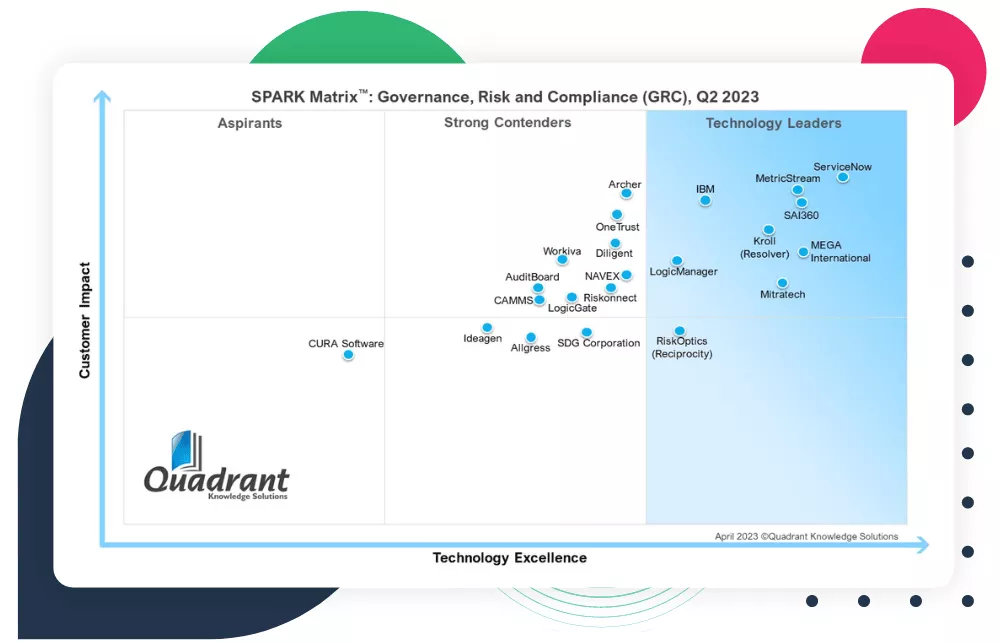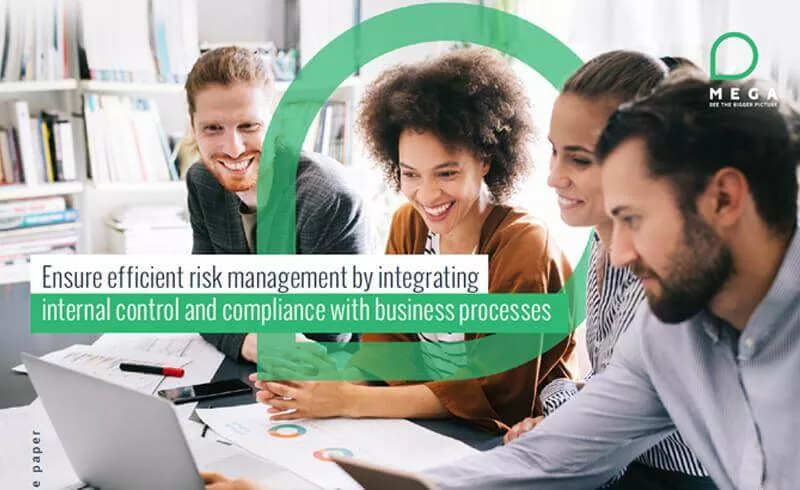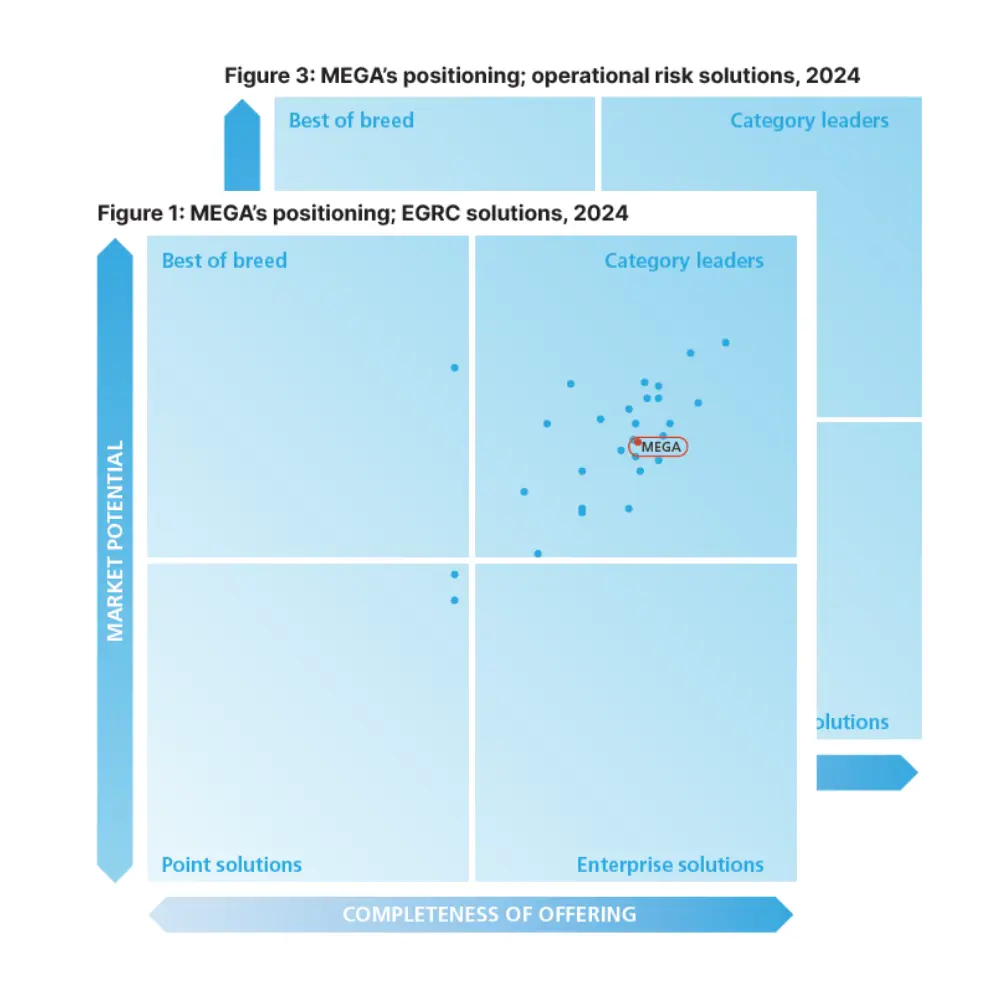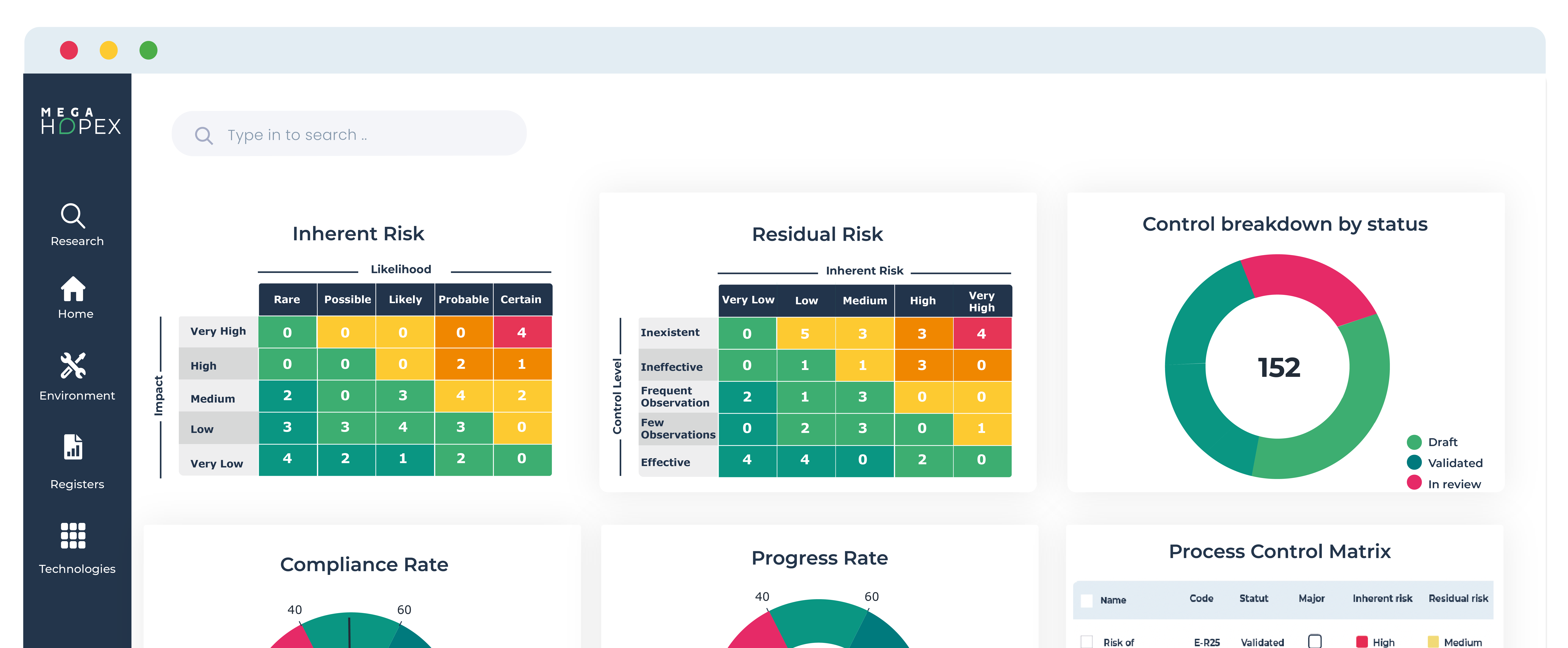
Breaking Silos to Ensure Success in Risk Management
Risk today is interconnected and needs to be understood in context. Consider the COVID-19 pandemic; what started with a health and safety risk has had a cascading impact on IT security, human resources, third parties, fraud, and other risks.
Managing risk has become a critical concern for organizations of all sizes and industries. Risk management involves identifying, assessing, and prioritizing potential risks to an organization's goals and objectives and taking proactive steps to mitigate or eliminate them. However, many organizations need help managing risk due to a siloed approach.
Risk Silos: a threat to organizations
Definition of risk silos
Risk Silo is often attributed when risks are managed separately instead of in an integrated manner. It's often due to an organizational issue. This challenge is even more significant when risk management is buried in the depths of departments and silos with no integrated focus and without a common repository across the business. Today's modern organization needs complete visibility and understanding of risk scattered throughout the business.
The Silo Mentality
A silo mentality refers to a department's tendency to work in isolation, often without sharing information or collaborating with other teams. Silos can hinder effective risk management, as they limit the organization's ability to view risk across all areas comprehensively.
When risk management is siloed, each department or team focuses solely on the risks relevant to their specific function without considering the overall impact on the organization. This can result in a fragmented and disjointed approach to risk management, where risks are not adequately identified or addressed.
The Importance of Breaking Down Silos
To ensure the success of risk management, organizations need to break down silos and adopt an integrated approach. This involves fostering collaboration and communication across different departments and teams and creating a shared understanding of risk.
Breaking down silos allows for a more holistic and comprehensive view of risk, enabling the organization to consider the interconnectedness of different risks and their potential impact on the entire organization. It also facilitates identifying and managing domino effects that may cut across multiple departments or functions.
Managing risk activities should be everyone's job.
Many organizations today manage risk activities and initiatives through these silos with a myopic, departmentalized lens. Risk management activities are often shoved deep into the organization's back-office departments and functions, ignoring that risk management should be everyone's job.
All employees must understand the organization's risk and compliance challenges regarding their specific role. Risks are managed at the front lines and exist throughout the organization and its operations. Moreover, risks are often interconnected and intertwined throughout the extended enterprise, constituted by all the third-party relationships the organization requires to operate.
This traditional, siloed approach to risk management can often lead to redundancy and confusion. Unmanaged risks can slip through the cracks as organizations need more visibility and understanding of risk holistic impact and connectivity throughout the enterprise. This negatively impacts the decision-making process throughout the organization while potentially exposing the organization to greater risk in a dynamic and distributed business environment.
The detrimental effects of silos on risk management
Risk and compliance in siloed organizations
A siloed approach to risk management completely ignores risk's intersection and their connected nature. Organizations need to be aware of this interconnectivity. Specialization in an organization is vital; however, when departments operate discreetly and fail to share important information on risk with the organization holistically, the consequences can be severe.
Organizations encumbered by siloes can experience conflicting policies, duplication of efforts, and inconsistent data. Even when an organization has an integrated risk management (IRM) architecture, many make the mistake of siphoning off that capability solely to one department. An integrated approach means risk is included in broader business and strategic decisions and managed across the entire perimeter of the line of defense as defined by the IIA.
Risk management should be instilled across the broader corporate culture, and risk awareness should be promoted across the entire enterprise and among all employees.
The Benefits of Integrated Risk Management
An integrated approach to risk management offers several benefits for organizations. Firstly, it allows for a real-time view of risk, enabling stakeholders to stay informed and make timely decisions. This is especially crucial in today's rapidly evolving risk landscape, where new threats and vulnerabilities emerge regularly.
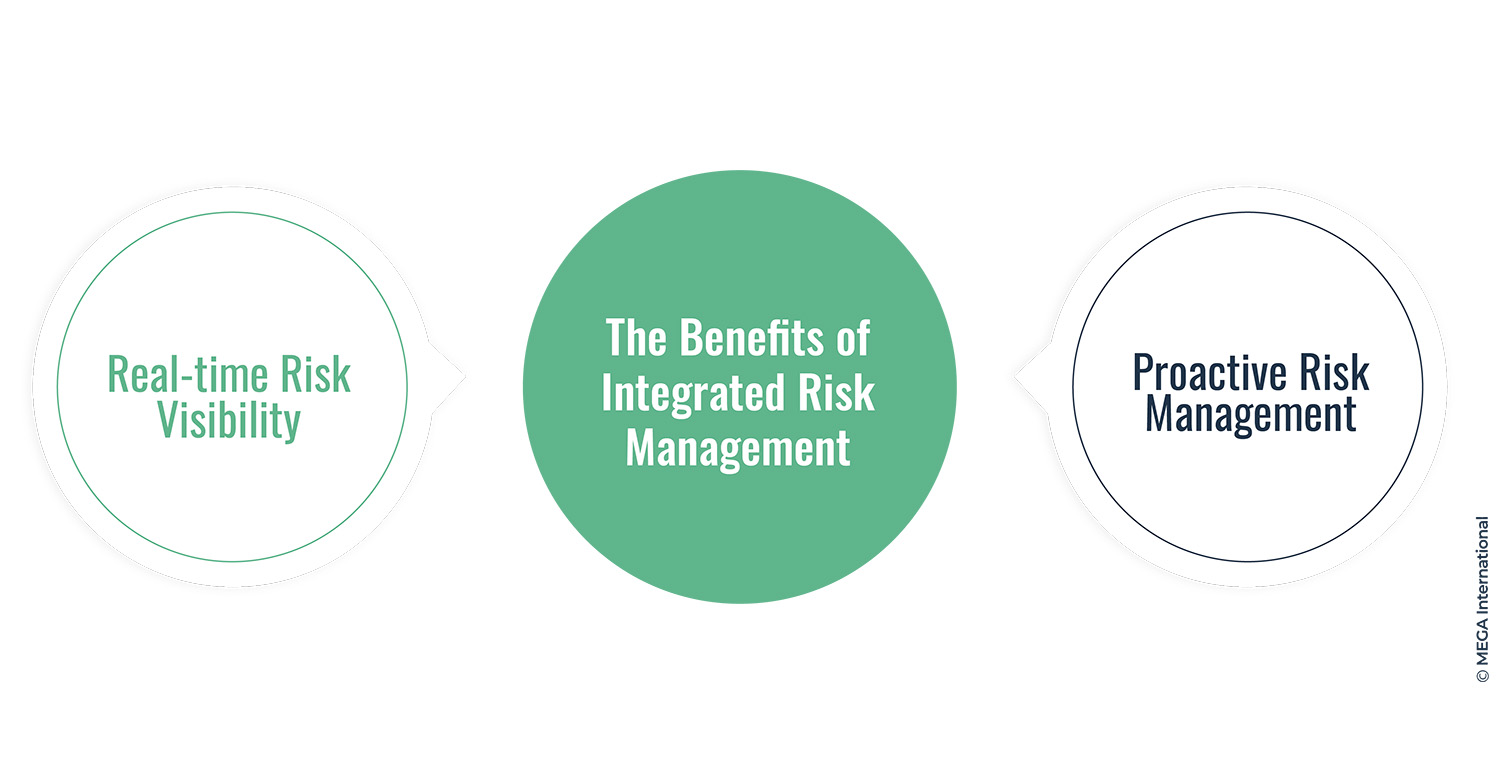
Additionally, an integrated approach promotes a more proactive and forward-thinking approach to risk management. By breaking down silos, organizations can better anticipate and prepare for risks rather than simply reacting to them when they occur. This helps to minimize potential losses and enhance business resilience.
Efficiency of risk assessment within an IRM architecture
IRM architectures function as a comprehensive risk management ecosystem, effectively minimizing resource misallocation costs resulting from redundancy and duplication that ultimately affect the organization's bottom line.
An Integrated Risk Management (IRM) architecture enhances an organization's ability to manage risks by providing a unified framework that integrates risk assessment, mitigation, and monitoring across various business functions. It enables a holistic view of risks, promotes regulation compliance, and supports proactive decision-making through data. By fostering a culture of risk awareness and aligning risk management with strategic goals, IRM architectures empower organizations to protect their interests better and respond effectively to known and emerging risks.
Implementing an Integrated Risk Management Framework
To break down silos and implement an integrated risk management framework, organizations should consider the following key steps:
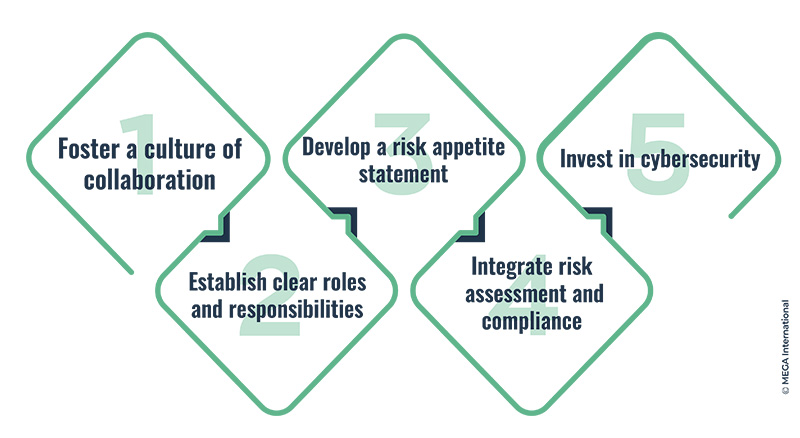
- Leadership Commitment: Gain buy-in and commitment from senior leadership. Ensure that top executives understand the value of IRM and are willing to support its implementation.
- IRM Governance Structure: Establish a clear IRM governance structure, including roles and responsibilities for risk management throughout the organization. Define who is accountable for risk-related decisions.
- Risk Appetite and Tolerance: Define the organization's risk appetite and risk tolerance levels. Determine how much risk the organization is willing to accept and where it needs to take action to mitigate risks.
- IRM Framework: Develop an IRM framework that outlines the processes, methodologies, and tools for risk management. Ensure it aligns with the organization's strategic goals.
- Federated approach: Integrate risk assessment and compliance activities to understand risk comprehensively. This involves identifying regulatory requirements, evaluating compliance, and aligning risk management strategies with legal and regulatory frameworks.
- Technology and Tools: Invest in appropriate IRM software and tools to support risk data collection, analysis, reporting, and monitoring. These tools can streamline processes and provide valuable insights.
Reporting and Communication: Establish a robust reporting and communication framework for sharing risk information with stakeholders, including senior management and the board of directors.
Best Practices for Integrated Risk Management
Adopting best practices can significantly enhance the effectiveness of an organization's integrated risk management approach. Some best practices include:
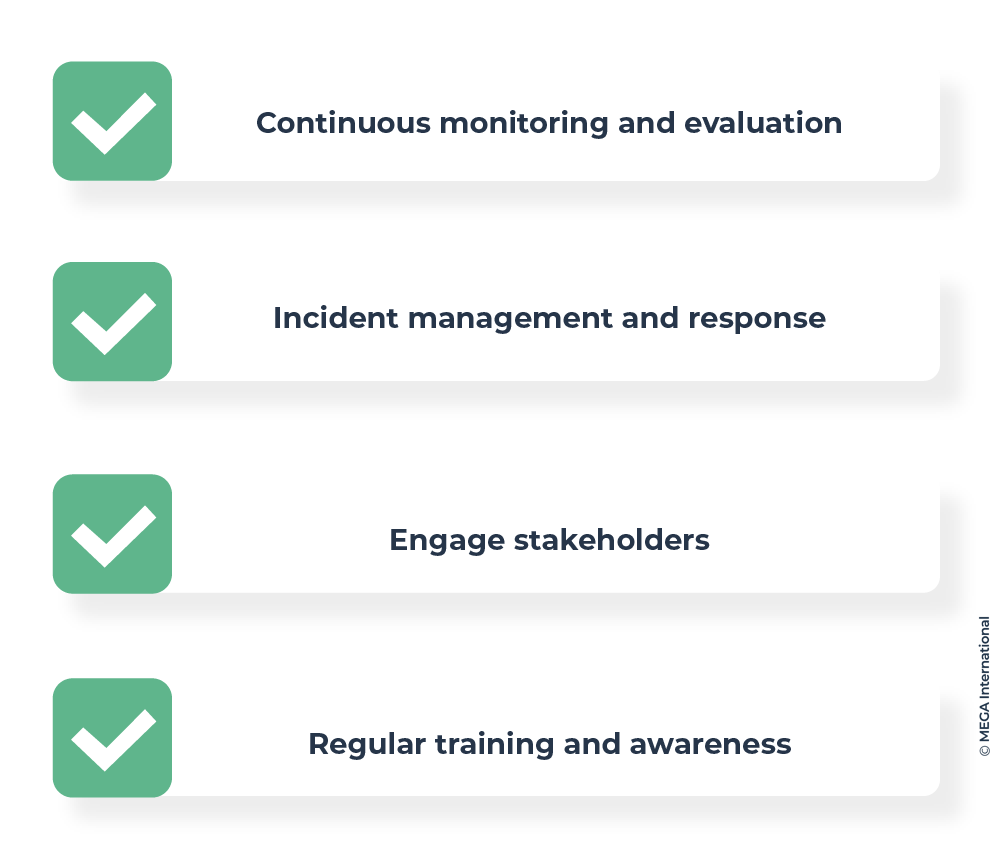
1. Continuous monitoring and evaluation:
Regularly monitor and evaluate risks to ensure that risk management strategies and controls remain practical and up-to-date. This involves periodic risk assessments, reviewing risk mitigation plans, and tracking key indicators.
2. Incident management and response:
Develop robust incident management and response procedures to address and mitigate risks when they occur effectively. This includes establishing clear escalation channels, defining incident response roles, and conducting post-incident reviews to identify areas for improvement.
3. Engage stakeholders:
Engage stakeholders at all levels of the organization in the risk management process. This includes involving employees, management teams, and external stakeholders such as suppliers, customers, and regulators. Their insights and perspectives can help identify and address risks that may go unnoticed.
4. Regular training and awareness:
Provide regular training and awareness sessions on risk management to equip employees with the knowledge and skills to identify and manage risks. This helps to create a risk-aware culture and empowers individuals to contribute to the organization's overall risk management efforts.
Breaking down silos and adopting an integrated approach to risk management is crucial for organizations to identify, assess, and mitigate risks effectively. By fostering collaboration, establishing clear responsibilities, and incorporating best practices, organizations can create a culture of risk awareness and ensure the success of their risk management programs. Ultimately, an integrated risk management approach enables organizations to navigate the complexities of today's ever-changing business landscape with confidence and resilience.
Integrated risk management leverages risk visibility to improve strategic decision-making
IRM gives business directors and executives a fine-tuned picture and understanding of all their risks scattered throughout the business. This improves the decision-making process with greater visibility and understanding of the organization's risk profile in the context of organizational operations and processes. On a different side of that same token, integrating risk management gives executives and directors insight into strategic decisions. It also improves the visibility of the interconnectedness of risk and how it could impact objectives and the business as a whole.
Learn about The Three Lines Model Update
A mature IRM program centralizes all the necessary reporting tools and provides risk dashboards for the organization. The actual value of IRM is that it allows the board, executives, and directors to leverage risk visibility and insights from risks throughout the organization for better overall strategic decision-making.
FAQs
Breaking silos in risk management means eliminating an organization's isolated and departmental approach to risk management. It involves breaking down the barriers between different departments and fostering a unified vision and understanding of risk across the organization.
Breaking down the silos is crucial in risk management because it allows for a holistic and comprehensive view of risk across the organization. Without breaking down the silos, different departments may have individual risk strategies, resulting in inefficiency and gaps in risk coverage.
Breaking down the silos enables the risk management teams to have a unified and coordinated approach toward identifying and addressing risk areas. It promotes collaboration and sharing of information, leading to better risk mitigation strategies and more effective management of risks.
By breaking down the silos, different departments and business units within an organization can have a more precise and comprehensive understanding of the overall risk landscape. This understanding helps develop a more accurate risk appetite and a well-aligned risk management strategy.
A holistic risk management approach brings various benefits, such as risk reduction, improved business continuity, better risk identification and assessment, streamlined compliance programs, enhanced cyber risk management, and a more unified and efficient risk strategy.
Ensure efficient risk management and operational resiliency
Governance, Risk and Compliance Related Content
Enhance operational resilience using integrated risk management
MEGA HOPEX for GRC
Request a demonstration of HOPEX for GRC, and see how you can have immediate value of your projects.







